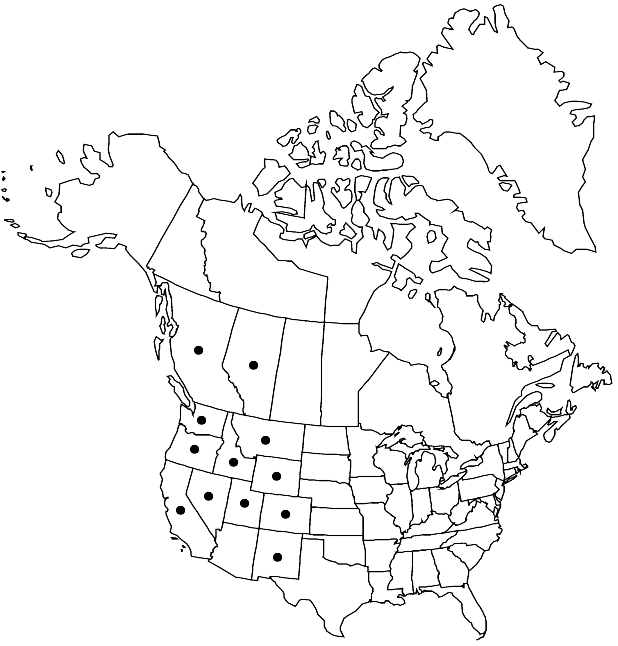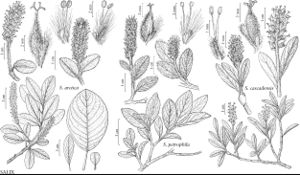Difference between revisions of "Salix petrophila"
Bull. New York Bot. Gard. 1: 268. 1899.
FNA>Volume Importer |
FNA>Volume Importer |
||
| Line 8: | Line 8: | ||
}} | }} | ||
|common_names=Rocky Mountain willow | |common_names=Rocky Mountain willow | ||
| − | |basionyms={{Treatment/ID/ | + | |basionyms={{Treatment/ID/Basionym |
|name=Salix arctica var. petraea | |name=Salix arctica var. petraea | ||
|authority=Andersson | |authority=Andersson | ||
| + | |publication_title=in A. P. de Candolle and A. L. P. P. de Candolle, Prodr. | ||
| + | |publication_place=16(2): 287. 1868, | ||
}} | }} | ||
|synonyms={{Treatment/ID/Synonym | |synonyms={{Treatment/ID/Synonym | ||
| Line 60: | Line 62: | ||
|publication year=1899 | |publication year=1899 | ||
|special status= | |special status= | ||
| − | |source xml=https://jpend@bitbucket.org/aafc-mbb/fna-data-curation.git/src/ | + | |source xml=https://jpend@bitbucket.org/aafc-mbb/fna-data-curation.git/src/f6b125a955440c0872999024f038d74684f65921/coarse_grained_fna_xml/V7/V7_84.xml |
|genus=Salix | |genus=Salix | ||
|subgenus=Salix subg. Chamaetia | |subgenus=Salix subg. Chamaetia | ||
Revision as of 20:24, 24 September 2019
Plants 0.02–0.1 m, forming clones by layering. Stems decumbent or trailing; branches yellow-brown, gray-brown, or red-brown, (often weakly glaucous, dull or slightly glossy), glabrous; branchlets yellow-green or yellow-brown, usually glabrous, sometimes pilose to glabrescent. Leaves: stipules absent or rudimentary; petiole 2–13 mm (longer than subtended bud); largest medial blade usually amphistomatous, very narrowly to broadly elliptic, oblanceolate, or obovate, 19–44 × 7–21 mm, 1.5–4.6 times as long as wide, base cuneate or convex, margins flat, entire, apex acute, acuminate, convex, or rounded, abaxial surface pilose to glabrescent, hairs wavy, adaxial dull or slightly glossy, pilose or sparsely villous to glabrescent; proximal blade margins entire; juvenile blade villous or pilose abaxially, mainly on margin. Catkins: staminate (ca. 50 flowers), 18–32 × 6–13 mm, flowering branchlet 3–13 mm; pistillate moderately densely to loosely flowered, (18–80 flowers), slender or stout, 18–59(–70 in fruit) × 6–15 mm, flowering branchlet 2–40 mm; floral bract tawny or brown, 0.5–3.6 mm, apex acute or rounded, entire or 2-fid, abaxially hairy or ciliate, hairs straight or wavy. Staminate flowers: abaxial nectary 0–0.2 mm, adaxial nectary oblong, narrowly oblong, or square, 0.4–1.2 mm, nectaries distinct; filaments distinct or connate less than 1/2 their lengths; anthers ellipsoid, short-cylindric, or globose, 0.4–0.8 mm. Pistillate flowers: adaxial nectary oblong, square, narrowly oblong, or ovate, 0.5–1.2 mm, equal to or longer than stipe; stipe 0.2–0.8 mm; ovary pyriform or obturbinate, sparsely to densely villous, beak gradually tapering to styles; ovules 6–12 per ovary; styles 0.4–1.6 mm; stigmas flat, abaxially non-papillate with rounded or pointed tip, or broadly to slenderly cylindrical, 0.28–0.36–0.6 mm. Capsules 3.6–5 mm. 2n = 76.
Phenology: Flowering Jul–Aug.
Habitat: Alpine snowbeds, meadows, talus slopes and open dry pool beds in spruce-fir forests
Elevation: 1700-4000 m
Distribution

Alta., B.C., Calif., Colo., Idaho, Mont., Nev., N.Mex., Oreg., Utah, Wash., Wyo.
Discussion
Salix petrophila is often included in S. arctica (G. W. Argus 1993), but southern cordilleran populations, extending as far north as southern British Columbia and Alberta, seem to be a distinct taxon (Argus 1997). The exact northern limit of this species still needs to be established, but in Alberta it does not seem to extend north of Waterton Lakes National Park, except for a population on springy slopes above Agness Lake, Banff National Park. Suitable alpine habitats between Waterton Lakes and Banff national parks, e.g., Mt. Armstrong, Tornado Mountain, and Crowsnest Pass, should be explored for S. arctica and S. petrophila.
Selected References
None.
